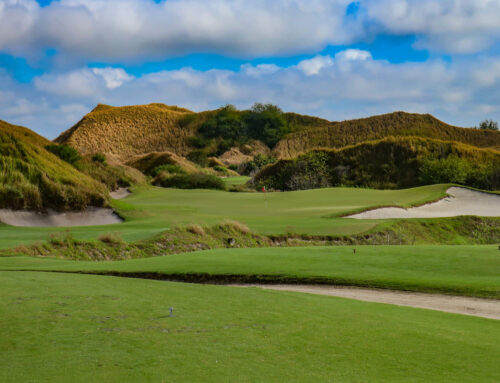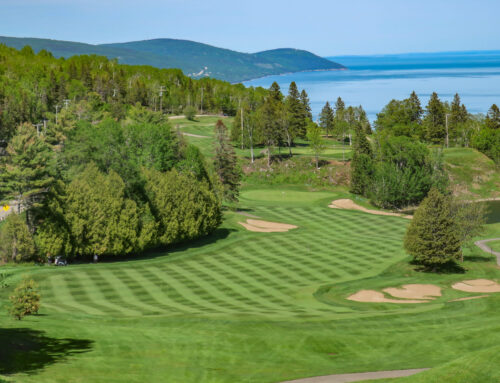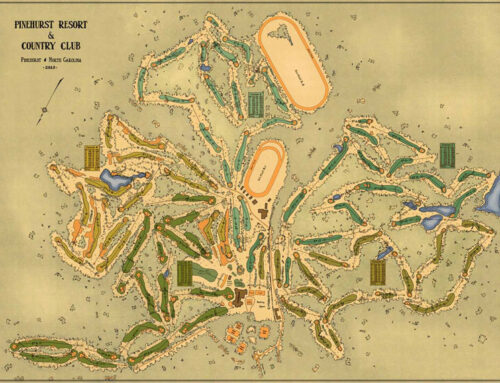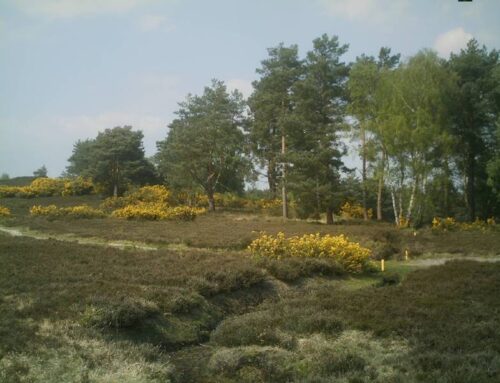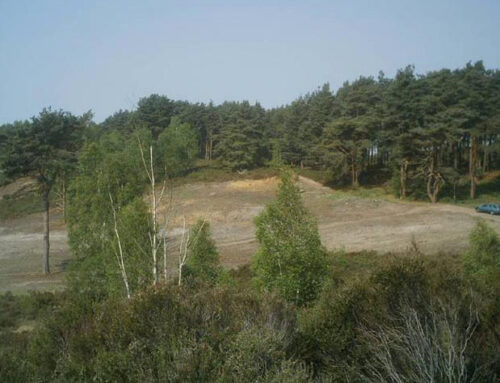The Sunningdale Story
pg. 3
In 1934 a large reconstruction of the remaining holes took place at considerable expense. The old seventh, eighth and ninth holes were abandoned. These were picturesque holes requiring any amount of climbing and descent. The sites of two of these holes, now much over-grown, may be seen through the trees to the right of the tenth hole of the Old Course. The New Course tenth hole was played to the present green from the top of the hill, a complete right angle to its present line (actually nearer 45 degrees).
The sixth hole, now the ninth, has had up to four separate greens. The first was along the top of the hill to the left, and then across the bridle path, well to the left of the present line. The writer did not see this green in play, but from an examination imagines there was too much trouble involved for the ordinary golfer and this was the reason for the construction of the second of the four greens. The site of this can be easily made out short of the bridle path on the line of the present green.
The third of the four greens was built over the spur of the hill, making a completely blind third shot to all but the biggest hitters who attempted to find it in two. This was actually the green for the Simpson tenth hole and tenth green discussed later and in use from 1934 to 1939. This did not remain in play for long and the last and present green was then constructed. It always has been and will remain a difficult piece of ground for construction purposes and still may be considered rather a freak hole. Despite this, in 1956 Arthur Lees and Gary Player, playing together in the fourth round of the Dunlop Tournament each scored threes at the hole.
Figure 20 shows today’s view of the ninth approach on the New Course and depicts the area of the second of the earlier greens of this hole with the white post in its pin position short of the track across the fairway.
The Google Earth picture in Figure 21 shows the Simpson tenth green and bunker, the third of four green sites for this hole as described on the previous page. Top right of the photo is today’s ninth green and bottom right are today’s tenth tees. The dominant pine tree on the elbow of the eleventh dog leg is clearly shown.
The Lost Colt Holes
This Figure 22 Google Earth view of the wood to the right of the tenth hole on the Old Course has been given an overlay of the positions of Harry Colt’s “Lost Holes”.
The layout of these holes in Figure 23 has been provided by Sunningdale Course Director Murray Long, whose interest in golfing archaeology has led him to locate the holes and features and he has provided an excellent map showing tees, greens and many of the main bunkers.
The holes are best walked over by starting up the track that leads up the hill just short of the ninth green on the New Course. At the top of the slope will be seen the seventh hole stretching down into the valley on the right. Scrub and trees have been removed in autumn 2009, but this clearout is not depicted on the Google Earth representation which was photographed in the summer of 2009.
The holes are spectacular and in 1923, in absence of the trees and overgrown vegetation, would have been more so. With today’s fitter population, buggies and power trolleys, it is questionable whether it would have been necessary to scrap these imaginative holes, but their location was forced on Colt as land later acquired by the club was not originally available. The eighth hole was provided with two sets of tees; one just beyond the seventh green, involving no further climbing, and a back tee at the top of a still visible track up a steep hill to the right of the green for the very fit; heart attack country indeed!
When descending from the tenth tee on the Old course, and about twenty yards short of the fairway, one can look to the right, and the back tee of the Colt lost ninth hole can be seen on the edge of the wood. Walking into the wood a further hundred yards, the site of the lost Colt eighth green becomes obvious, surrounded by bunkers and with steep hillsides in two directions, and growing on the green are large chestnut trees, probably planted at the location. This green is worth a five minute detour for Colt admirers (see Figures 29 and 29A).







